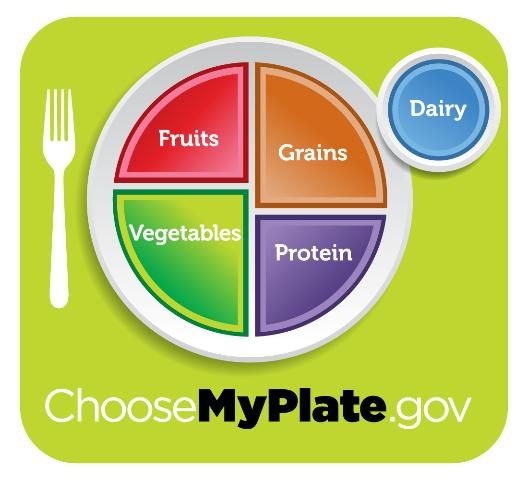What are vitamins?
Vitamins are chemical compounds that the body uses in a variety of ways. We need to get vitamins from our diet because we can't make them in the body. There are 13 different vitamins that have been identified as important nutrients for humans.
What are the different types of vitamins?
Vitamins are grouped as water-soluble and fat-soluble. The water-soluble vitamins include vitamin C and the B vitamins. The fat-soluble vitamins are vitamins A, D, E, and K. Water-soluble and fat-soluble vitamins differ in how easily they dissolve in water. This mainly affects how the different types of vitamins are absorbed and carried in the body. Most vitamins have both a chemical name and a letter name.
Water-Soluble Vitamins
- Ascorbic Acid (Vitamin C)
- Thiamin (Vitamin B1)
- Riboflavin (Vitamin B2)
- Niacin (Vitamin B3)
- Pyridoxine (Vitamin B6)
- Cobalamin (Vitamin B12)
- Folate
- Pantothenic Acid
- Biotin
Fat-Soluble Vitamins
- Retinol (Vitamin A)
- Calciferol (Vitamin D)
- Tocopherol (Vitamin E)
- Phyllo- and Menaquinones (Vitamin K)

Credit: Lisa Brewster
What do vitamins do in the body?
Vitamins work in many reactions that regulate body processes. The following list gives examples of some vitamins and their specific functions:
- Vitamin C, vitamin E, and beta-carotene (a form of vitamin A) act as antioxidants. They prevent cells from being damaged by oxygen.
- Vitamin A is important for normal vision and immune function.
- Vitamin D is needed for bone health.
- Vitamin K is important for blood clotting.
Where are vitamins found in foods?
All of the food groups have foods rich in vitamins. Milk naturally contains riboflavin and is fortified with vitamins A and D. Enriched grain products contain added thiamin, riboflavin, niacin, and folic acid.
Vitamin C is found in fruits and vegetables, while only animal foods naturally contain vitamin B12. Some high-fat foods, such as vegetable oil, salad dressing, nuts, seeds, and mayonnaise, are rich in vitamin E.
It's important to eat a variety of foods from each of the food groups to get all the vitamins you need. For information about nutrients found in the various food groups, see http://ChooseMyPlate.gov or contact your local UF/IFAS Extension office.

Credit: ChooseMyPlate.gov
Do fresh foods have the most vitamins?
Fresh fruits and vegetables are good sources of many vitamins. The fresher they are, the more vitamins they contain. Farmers' markets are great sources of fresh fruits and vegetables in season.
Canned and frozen fruits and vegetables can be just as nutritious as fresh produce. When produce is canned or frozen, it is processed quickly and then sealed in a package to reduce further loss of vitamins.
How can I get the most out of the foods I eat?
Vitamins, especially water-soluble vitamins, can be lost from foods when exposed to heat, light, and/or air. Cooking foods, especially if they are chopped up and cooked for a long time in large amounts of water, reduces their vitamin content. Here are some cooking tips to help preserve the vitamin content of your foods:
- Use as little water as necessary.
- Keep the pieces of food as large as possible.
- Cook for a short period of time.
- Microwave, stir-fry, or steam vegetables.
- Use water that vegetables were cooked in to make soups or stews (use within a couple of days, or freeze).
How much of each vitamin do I need each day?
The amount of vitamins we need is actually very small—much smaller than the amounts of carbohydrates, protein, and fats required for a healthy diet. For example, we need only a few micrograms of vitamin B12 per day. To give you an idea of how little this is, a teaspoon of vitamin B12 is enough to meet the daily needs of over 2 million adults!
The % Daily Value (%DV) for a vitamin on a food label shows you what percent of a typical healthy adult's daily need for that vitamin is provided by a serving of the food. For example, an 8-ounce glass of orange juice provides 120% of the Daily Value for vitamin C, and 15% of the Daily Value for folate.
Should I take supplements to get the vitamins I need?
While it's possible to get all the vitamins you need by making healthy food choices, people sometimes need supplements. For example,
- All women of childbearing age should get 400 micrograms of folic acid each day from fortified foods or a supplement, in addition to folate from a varied diet.
- Older adults may have difficulty absorbing vitamin B12 from foods. They also need more vitamin D as they age. Most of their B12 intake should come from fortified foods or supplements.
- Pregnant women should ask their physician about the supplements that are right for them.

Credit: UF/IFAS
Can large amounts of vitamins be harmful?
With vitamins, as with many things in life, more is not necessarily better. Some vitamins can be toxic in large doses (see Table 1 below). Side effects range from stomach upset or diarrhea to liver damage or birth defects.
Table 1. Tolerable Upper Limit Levels* for Daily intakes of Vitamins.
Excessive intakes of vitamins usually come from high-dose supplements. That's why most people should choose supplements that contain no more than 100 to 150% of the Daily Value for each vitamin.
Where can I get more information?
The UF/IFAS Extension Family and Consumer Sciences (FCS) agent at your local UF/IFAS Extension office may have written information and nutrition classes for you to attend. Also, a registered dietitian nutritionist (RDN) can provide reliable information to you.
Reliable nutrition information may be found on the Internet at the following sites:
References
Institute of Medicine. 1998. Dietary Reference Intakes for Thiamin, Riboflavin, Niacin, Vitamin B6, Folate, Vitamin B12, Pantothenic Acid, Biotin, and Choline. Washington (DC): National Academies Press (US) National Academy of Sciences.
Institute of Medicine 2000. Dietary reference intakes for the antioxidant nutrients: vitamin C, vitamin E, selenium, and carotenoids. Washington (DC): National Academies Press (US) National Academy of Sciences.
Institute of Medicine. 2011. Dietary Reference Intakes for Calcium and Vitamin D. Washington (DC): National Academies Press (US) National Academy of Sciences.